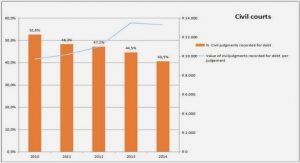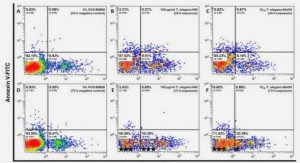Get Complete Project Material File(s) Now! »
Electrical stimulation is used as a means of accelerating the post- slaughter fall of pH and the onset of rigor. Electrical stimulation involves passing an electric current through the carcass after slaughtering. This stimulates the muscle to contract and utilize glycogen and ATP, thereby accelerating rigor mortis and causing a rapid decline in pH within the muscle (Taylor, 1981; Taylor, Perry & Warkup, 1995; O‟Neill, Troy & Mullen, 2004; Strydom, Frylinck & Smith, 2005). When the electrical current is interrupted, there is still sufficient glycogen and ATP in the muscle to enable the carcass to relax. Due to this low energy reserve, rigor mortis begins earlier while the muscle temperature is still high (Taylor, 1981). As a result, tenderization will start earlier at the prevailing temperature (Dransfield, 1994). When rigor mortis occurs in a relaxed muscle, the sarcomere lengths are not affected, allowing the meat to retain its inherent tenderness (Potter & Hotchkiss, 1995; Kerth, Cain, Jackson, Ramsey & Miller, 1999; Monson, Sanudo, Bianchi, Alberti, Herrera & Arino, 2007). Overstimulation however, can lead to a low pH at a high temperature resulting in heat shortening and therefore a decrease in tenderness. It has been shown that a good pH-temperature relationship seems to be a pH above 6.0 at high temperatures and a pH of below 6.0 at temperatures below 12ºC (Thompson, 2002). This means that under conditions where immediate chilling of the carcass occurs, it would be beneficial to implement electrical stimulation in order to cause a rapid drop in pH, thereby avoiding the potential of cold shortening. Electrical stimulation has also been shown to provide tender meat in half the aging time of non-stimulated meat but only under conditions of slow cooling (Dransfield, Etherington & Taylor, 1992). This corresponds with an experiment conducted by Strydom, Frylinck and Smith (2005), where M. longissimus lumborum muscles from electrically stimulated sides were more tender than the non-stimulated muscles at 2 days aging. At 14 days however, there was no significant difference between non-stimulated and stimulated muscles. This result coincided with decreased available µ-calpain activity at 24 h post mortem, meaning that initial tenderness was due to increased enzyme activity which was then exhausted.
Prolonged aging
Aging refers to the improvement in palatability that occurs as meat is held post mortem beyond the normal time taken for setting and cooling to enhance tenderness (Moran & Smith, 1929). Aging can therefore be seen as the later part of tenderization and can be measured. The extent of aging is largely related to the level of calpains at 24 h post mortem and varies according the initial levels and their inactivation during the development of rigor (Dransfield, 1992).Temperature also plays an important role in governing aging, as once rigor is complete, time and temperature are the only variables which can be controlled (Dransfield, 1992). Freezing stops calpain activity but does not destroy the enzymes. This means that while the meat is frozen, enzyme activity remains halted, but is regained after thawing (Dransfield, 1992). Freezing doubles the rate of aging after thawing, when compared to aging of fresh samples, and this increased rate is probably due to cellular damage.
CHAPTER 1: INTRODUCTION
1.1 PROJECT THEME
1.2 PROJECT TITLE
1.3 AIMS
1.4 MOTIVATION
1.5 HYPOTHESIS
1.6 REFERENCES
CHAPTER 2: LITERATURE REVIEW
2.1 MEAT TENDERNESS
2.2 BETA- ADRENERGIC AGONISTS
2.3 VITAMIN D3
2.4 OTHER FACTORS AFFECTING MEAT QUALITY
2.5 CONCLUSION
2.6 REFERENCES
CHAPTER 3: MATERIALS AND METHODS
3.1 EXPERIMENTAL DESIGN AND FEEDLOT PHASE
3.2 SLAUGHTER AND SAMPLING PROCEDURES
3.3 WARNER BRATZLER SHEAR FORCE MEASUREMENTS
3.4 HISTOLOGICAL MEASUREMENTS
3.5 MUSCLE BIOCHEMISTRY
3.6 SERUM CALCIUM AND PARATHYROID ANALYSES
3.7 COLOUR AND DRIP LOSS OF FRESH MEAT
3.8 STATISTICAL ANALYSES
3.9 REFERENCES
CHAPTER 4: THE EFFICIENCY OF ELECTRICAL STIMULATION TO COUNTERACT THE NEGATIVE EFFECTS OF BETA-AGONISTS ON MEAT TENDERNESS OF FEEDLOT CATTLE
4.1 ABSTRACT
4.2 INTRODUCTION
4.3 MATERIALS AND METHODS
4.4 RESULTS
4.5 DISCUSSION
4.6 CONCLUSION
4.7 REFERENCES
CHAPTER 5: THE EFFECTS OF A BETA-AGONIST TREATMENT, VITAMIN D3
SUPPLEMENTATION AND ELECTRICAL STIMULATION ON MEAT QUALITY OF
FEEDLOT STEERS
5.1 ABSTRACT
5.2 INTRODUCTION
5.3 MATERIALS AND METHODS
5.4 RESULTS
5.5 DISCUSSION
5.6 CONCLUSION
5.7 REFERENCES
CHAPTER 6: EFFECT OF DIETARY BETA-AGONIST TREATMENT, VITAMIN D3 SUPPLEMENTATION AND ELECTRICAL STIMULATION OF CARCASSES ON COLOUR AND DRIP LOSS OF STEAKS FROM FEEDLOT STEERS
6.1 ABSTRACT
6.2 INTRODUCTION
6.3 MATERIALS AND METHODS
6.4 RESULTS
6.5 DISCUSSION
6.6 CONCLUSION
6.7 REFERENCES
CHAPTER 7: CONCLUSION
CHAPTER 8: CRITICAL EVALUATION






